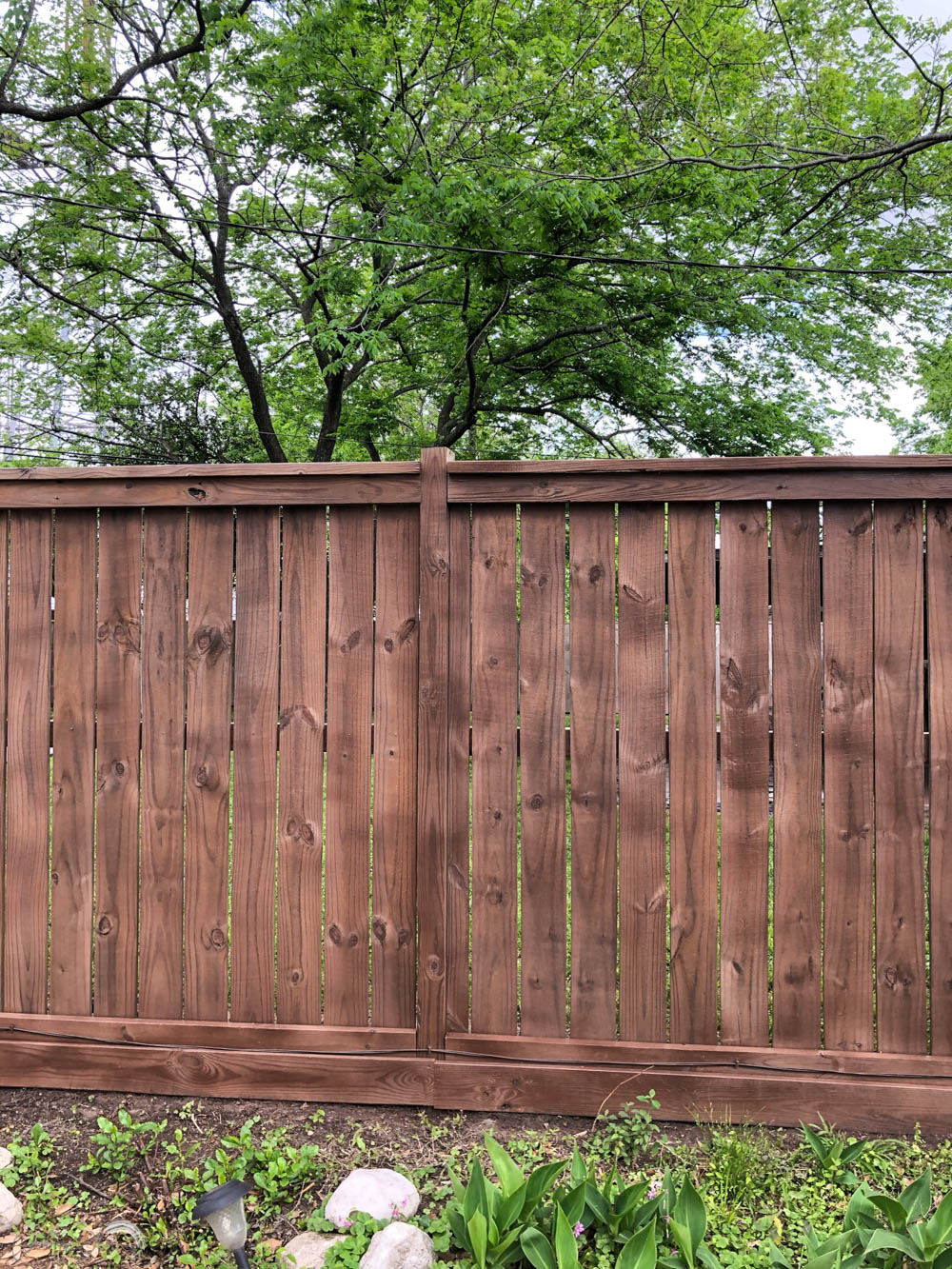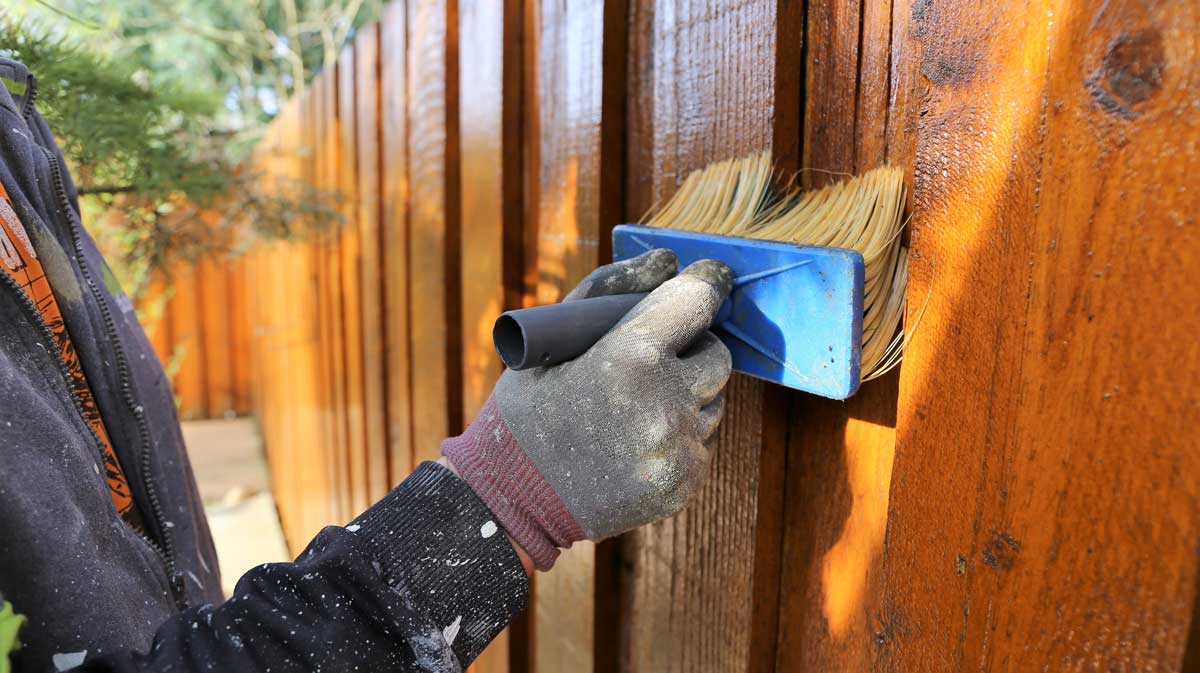Just How to Achieve Professional Outcomes With Deck Discoloration
In the realm of outside maintenance, achieving specialist outcomes with deck staining is a task that requires accuracy and treatment. The procedure of transforming an aging deck into a rejuvenated outside room needs greater than simply a coat of discolor; it requires a methodical strategy and focus to information. From picking the ideal tarnish for your deck's timber kind to understanding the application strategy, each action plays a vital function in the final result. As we start this journey to elevate the appearances and durability of your outside haven, understanding the subtleties of deck staining will certainly be the cornerstone of your success.
Selecting the Right Stain
Picking the suitable tarnish for your deck is a critical choice that considerably influences the general appearance and durability of the coating. When picking a tarnish for your deck, it is necessary to take into consideration both the aesthetic preferences and the useful aspects of the product. Strong shade discolorations, on the various other hand, give the a lot of UV security and use a large array of shade choices but will completely hide the wood grain.

In addition, think about the kind of wood your deck is made of, as various stains are created to work best with certain wood kinds. Comprehending the level of maintenance you want to dedicate to is additionally vital, as some stains might need even more frequent reapplication than others. By meticulously considering these variables, you can choose a discolor that not only boosts the appearance of your deck however additionally safeguards it for several years to come.
Preparing the Deck Surface Area
When thinking about deck staining, the preliminary step in the direction of attaining specialist outcomes entails extensively preparing the deck surface area. Properly preparing the deck surface area is essential as it makes sure that the discolor adheres well and offers lasting security to the wood.
After cleaning, check the deck for any kind of harmed or rotten boards. Replace these boards to guarantee the structural integrity of the deck. Sanding the deck surface area is additionally necessary to ravel any type of rough locations and open up the wood pores for better tarnish infiltration. Utilize a medium-grit sandpaper to sand the deck towards the timber grain.
Finally, safeguard any nearby plants, furniture, or surface areas from possible damage by covering them with plastic sheeting or drop cloths. Putting in the time to completely prepare the deck surface establishes the structure for a successful discoloration job and ensures professional-looking outcomes.
Applying the Spot
To attain a specialist finish when staining a deck, meticulous application of the discolor is essential. Use the tarnish uniformly, complying with the wood's grain to enhance the deck's all-natural elegance. By using the discolor carefully, you'll achieve a professional-looking finish that enhances both the appearance and long life of your deck.
Guaranteeing Correct Drying Out Time
Making certain adequate drying time post-staining is vital to the total success of the deck task, as it allows the discolor to correctly establish and bond with the timber surface area. As a general standard, many deck spots will need at least 24-48 hours to completely dry completely.
Throughout this drying out period, it is essential to maintain the deck surface area complimentary from any kind of foot web traffic, furniture, or other items that may disturb the finish. Taking the time to make sure extensive page drying will contribute dramatically to the long life and appearance of your discolored deck.
Preserving Your Tainted Deck
Correct maintenance of a stained deck is necessary for protecting the honesty and appearance of the surface achieved via comprehensive drying out - pressure washing near me. To keep your stained deck efficiently, routine cleaning is essential. Sweep away debris and dirt on a regular basis to prevent staining and mold and mildew growth. Think about utilizing a mild detergent mixed with water to scrub the surface area and remove any kind of built-up gunk. It is advisable to cleanse your deck a minimum of twice a year, preferably in the springtime and autumn, to keep it looking fresh and lively.

Final Thought
In final thought, accomplishing professional results with deck discoloration includes choosing the suitable stain, correctly preparing the deck surface, applying the stain equally and continually, allowing for sufficient drying out time, and preserving the discolored deck routinely. By following these steps thoroughly and attentively, you can ensure a wonderfully discolored deck that improves the look and longevity of your outdoor area.

Correct maintenance of a tarnished deck is vital for protecting the stability and look of the surface accomplished via complete drying.